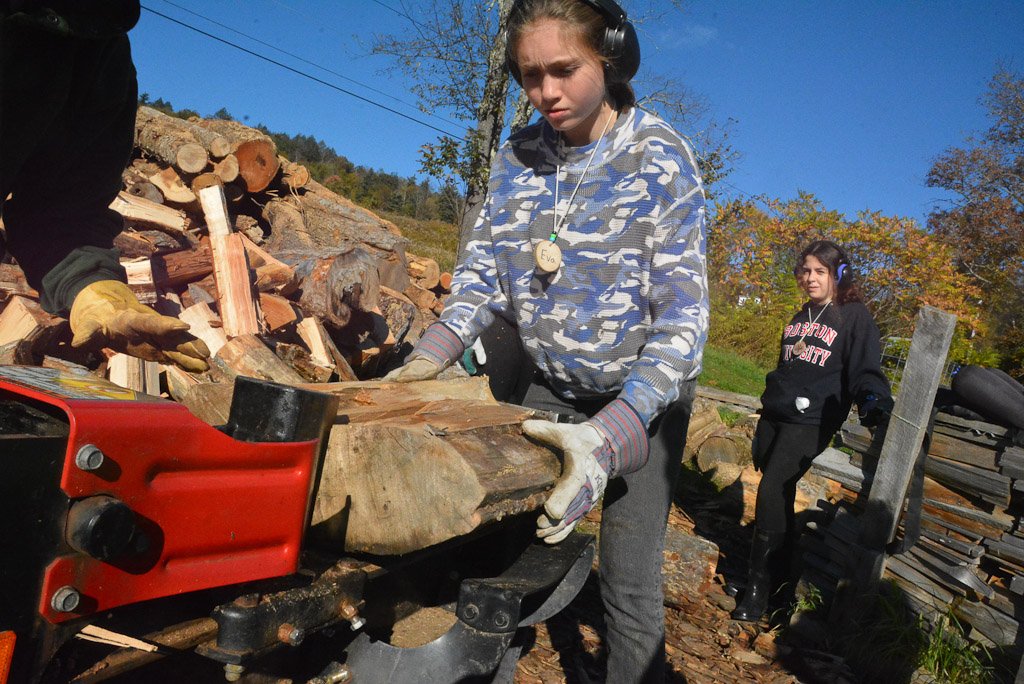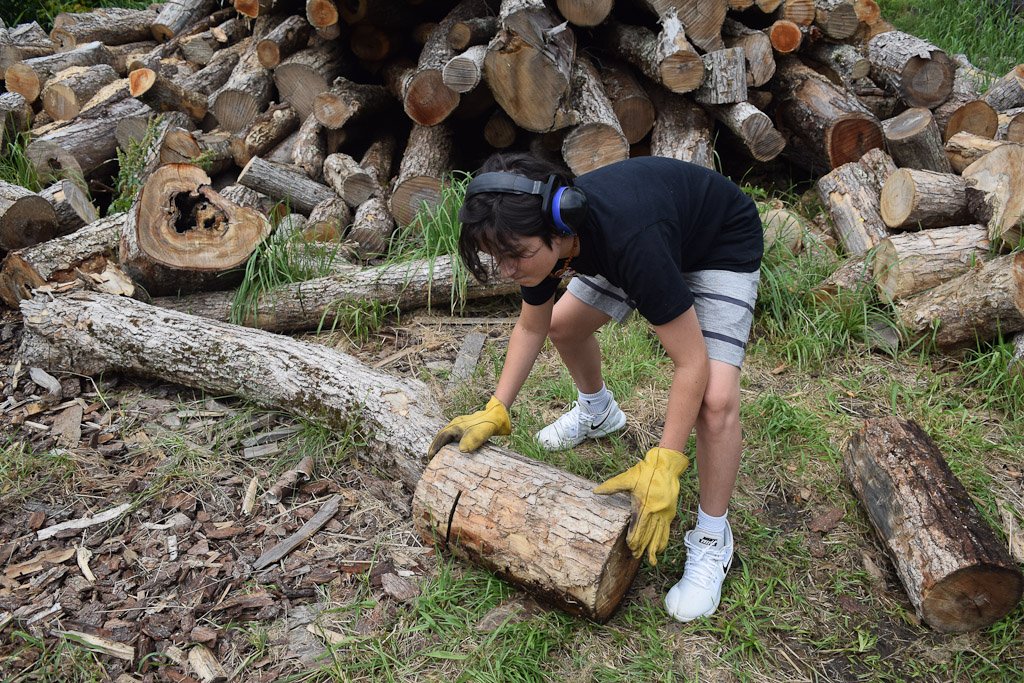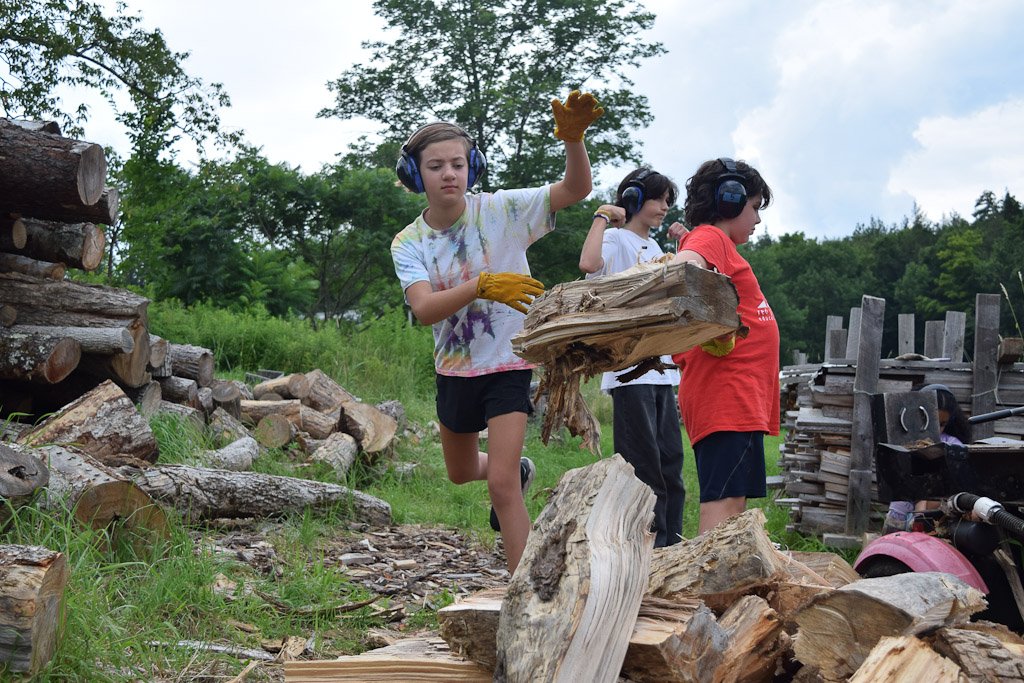Firewood Length Optimization
/Elizabeth RennErt - RGF staff
Hello, I am Elizabeth! At Red Gate, I have been a summer camp counselor, a volunteer, a part-time teacher, and now an intern! I’m a student at Smith College, studying both engineering and education, with a special passion for the outdoors. I’m so excited to share my view of the farm with all of you!
If you’ve been by Red Gate anytime in the past couple months, you’ve surely seen our wood stove chugging away. Our stove works hard to heat the program building, the roost, and the farmhouse. Heating all those spaces to a comfy temperature takes a lot of firewood!
Throughout the year, we spend hours up at our wood processing site on Norman Road. There are many steps to turn big logs into firewood that can fit in our stove, and this is the story of that process (Plus a little math for extra fun!)
We get truckloads of logs delivered from local lumber suppliers, as well as collecting some of our own from trees that have been felled on the property. These logs are huge, and stacked in a big pile many feet high.
Our expert chainsaw users hop on the pile and buck up the wood. Bucking is the process of cutting a long log into many shorter rounds. This allows us to move the wood with significantly more ease.
The rounds, however, are still much too big to move long distances and are rather unwieldy. Using a hydraulic wood splitter, we split the rounds into thinner pieces of firewood.
The hydraulic wood splitter uses a very slow-moving axe head and pushes against the log in the same direction of the grain. This takes advantage of the natural tendency of wood to split along the grain.
We still have a little ways to go until the wood makes its way into the stove. Since all this firewood is still fairly fresh and moist, we need to stack it and allow it to dry out before we burn it. These stacks of firewood will sit, covered by metal roofing, at the wood processing site for about a year until they are fully seasoned.
After they are seasoned, we will bring them down to our new “woodhouse”, a greenhouse structure that we store firewood inside of. This is right next to the stove and makes loading the stove very easy, which is great, since we have to load it three times a day!
And that’s how wood gets from a tree to our stove.
…Now for some math!
This blog post was inspired by an optimization question posed to me. What is the ideal length of firewood for Red Gate Farm? We want it to be as long as possible, while still fitting in both the wood splitter and wood stove, as well as maximizing stackage in the woodhouse.
In order to find the optimal length, I went out into the field and took some measurements. The wood splitter can split logs up to 25 inches in length, the wood stove has a depth of 34 inches, and the woodhouse cross-section can be modeled by a rough semicircle with a diameter of 16 ft.
From here, it’s clear that the wood splitter is the limiting factor in the process. Additionally, we have to account for the fact that some rounds will be cut slightly longer than the measurement to minimize waste. I accounted for this by estimating that the maximum overage would be about 10%. This results in a maximum length of 22.72 inches. I rounded down to 22.5 inches for ease of calculation.
I still had to check that it would stack nicely in the woodhouse, ensuring that we were making the most of our space. In order to do this, I graphed a semicircle, then overlaid vertical lines spaced 22.5 inches (1.875 ft) apart. By finding when the lines intersected with the semicircle, I was able to mark out the maximum height of each stack.
Since we need to be able to walk through the woodhouse, one column was removed, creating five stacks, a walkway, then another two stacks.
This gives a stacking cross-sectional area of 74.19 square feet. Since the total cross-sectional area is just of 100 square feet, this gives us a stacking efficiency of 74%! Using the length of the woodhouse as 48 feet, I was able to calculate that our woodhouse could hold 3561.12 cubic feet of wood, or 27.8 cords. That’s a lot of wood!
This means that when we’re bucking up the logs into rounds, we should aim for a length of 22.5 inches between cuts for the ideal pieces of firewood!














